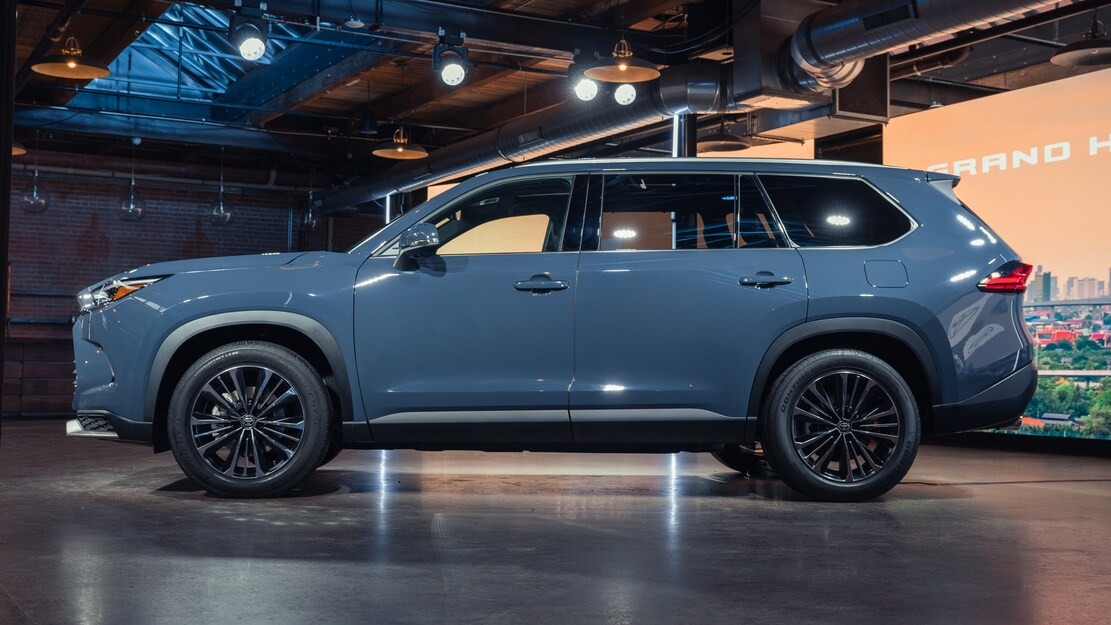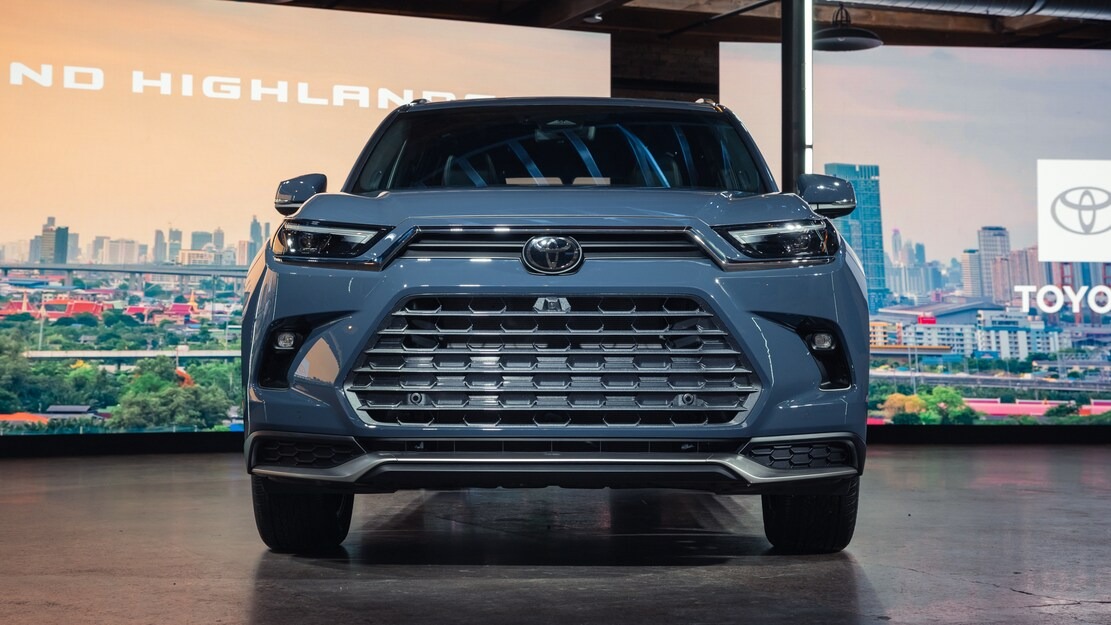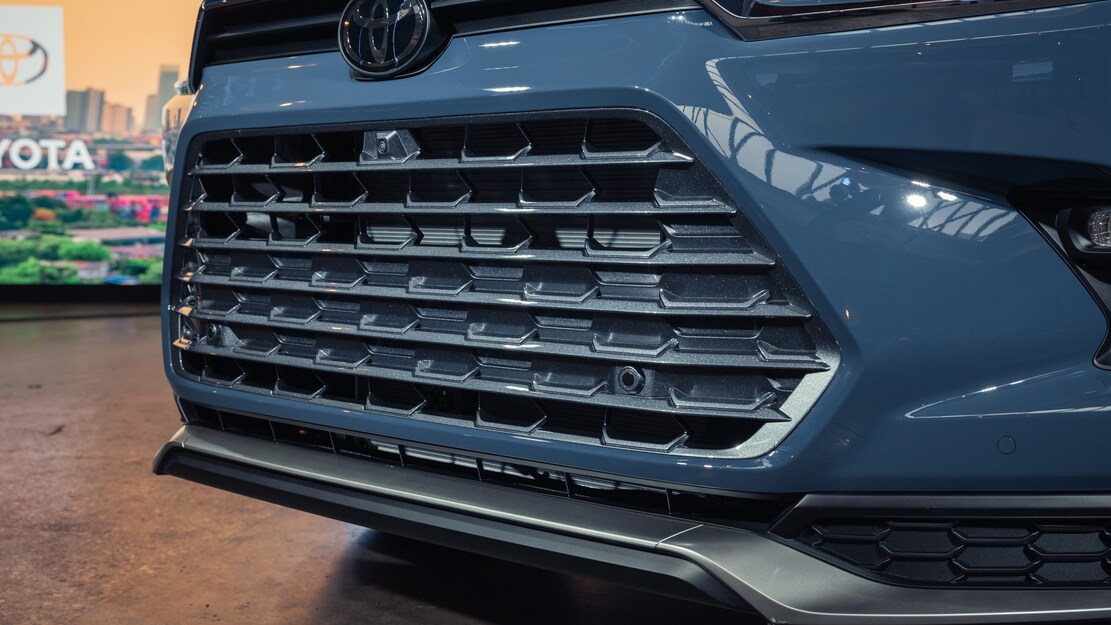All-new, all-different SUV poised to take on the Palisade, Telluride, and Atlas competitors.
Meet Toyota’s all-new 2024 Grand Highlander, which, despite its name, is not actually just a bigger Highlander (or a poshed-up one, as Jeep’s Grand Wagoneer is to the regular Wagoneer). The three-row Grand Highlander SUV is actually a completely new vehicle, larger than the Highlander and intended to compete against the likes of the Hyundai Palisade, the Kia Telluride, Volkswagen Atlas, and even Jeep’s Grand Cherokee L.

Visually, it’s pretty easy to tell the Grand Highlander from its non-grand sibling. It’s a bigger vehicle, standing 4 inches longer, 2 inches taller, and 2.3 inches wider. From the front, the Highlander’s algae-sucker fascia is replaced by a more conventional dual-grille arrangement. From the side, the Grand Highlander does away with the Highlander’s exaggerated door-to-fender character lines, instead featuring a beltline that runs nearly parallel to the ground, and it has a thicker D-pillar. Blocky and solid, the Grand Highlander looks unashamedly like the family hauler it is. It’s a handsome vehicle in the way that a Clydesdale is a handsome horse.
The interior, though differing in detail from the Highlander, features the same general layout, its 12.3-inch center screen sitting atop climate controls with proper buttons and dials. As with the Highlander, there is plenty of storage space, including a deep center console. Front seats are supportive and comfortable. We sampled both the leather seating in the Platinum model and the Ultrasuede and leather exclusive to the Hybrid Max; either setup would do a Lexus proud. For the roomy second row, the Grand Highlander offers either individual buckets or a three-row bench, for a total of either seven or eight seats. Seven USB-C ports and 13 (!) cupholders are scattered throughout the interior.

Toyota is making a big deal about the third row, saying it’s sized for two full-size adults. Indeed, we found an almost-6-footer can fit back there with adequate headroom and enjoy a reasonable amount of legroom, as well, provided the second-row passengers are willing to give up a bit of their own. However, just because you can fit doesn’t mean you can fit comfortably: The low-mounted bottom cushion makes for a knees-up seating position, and the seat itself feels hard and thinly padded. The amenities are there; each third-row occupant gets their own USB-C port and twin cupholder that doubles as tablet stowage, and a well-positioned grab handle makes ingress easy. Unfortunately, as soon as you’re in the third row, you might well want out again.
One chief advantage of an SUV of this size is the ability to carry cargo with all seats occupied. The Grand Highlander offers 20.6 cubic feet of cargo space with the third row in place, and its shape will accommodate bulky suitcases. With all seats down, the Grand Highlander offers 97.5 cubic feet of freight volume.

Powertrains mimic that of the Highlander SUV, with a 2.4-liter turbocharged four-cylinder engine or a 2.5-liter hybrid, both available with front- or all-wheel drive. (Horsepower numbers are still under wraps, but these powertrains develop 265 and 243 hp, respectively, in the Highlander.) In addition, the Grand Highlander offers a Hybrid Max powertrain, similar to the one in the 2023 Crown, which employs a 2.4-liter turbocharged engine boosted by an electric motor, plus a second motor to drive the rear axle. Toyota did give us a horsepower number for this powertrain: 362 for the whole system. Toyota anticipates a 0-60 time of 6.3 seconds for the Hybrid Max and a tow rating of 5,000 pounds.
As with all of Toyota’s latest offerings, you can expect no shortage of safety, driver assistance, and infotainment technology. For the former, the Grand Highlander gets Toyota’s Safety Sense 3.0 package with dynamic cruise control, collision detection with automatic braking, road sign recognition, and lane keeping assistance. The stereo is Apple CarPlay and Android Auto compatible, pairs two Bluetooth phones, and offers subscription-based 4G Internet connectivity with an integral Wi-Fi hot spot.

Toyota will offer the Grand Highlander in XLE, Limited, and Platinum trim; no lowly LE (or sporty SE) model here. Base-level standard equipment is impressive. It includes 18-inch alloy wheels, faux-leather seats (power-adjustable and heated up front), and a power tailgate, and higher models up the finery, including genuine leather and a panoramic moonroof. Pricing hasn’t been announced—we should hear more this spring—but competitors start in the mid- to high 30s, and we expect the Grand Highlander will be at the higher end of that range.
While the name situation is a bit confusing, we understand Toyota’s decision: A new nameplate is expensive to launch, and it takes time for potential buyers to build an association. (Just look at the slow sales growth of Toyota’s competent Venza SUV.) The Highlander name is already associated with family-friendly motoring, and our first walk-around tells us the Grand Highlander is about as family-friendly as a Toyota SUV can get. The third-row seat might not be as practical an addition as Toyota implies, but there’s plenty of room for a growing family and friends. The 2024 Grand Highlander should be in dealerships this summer, and we expect it to get a running start as a strong competitor.








